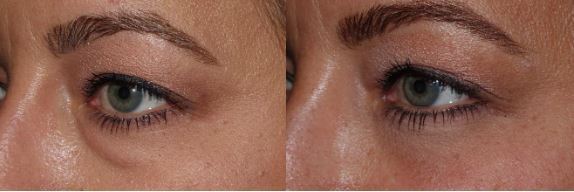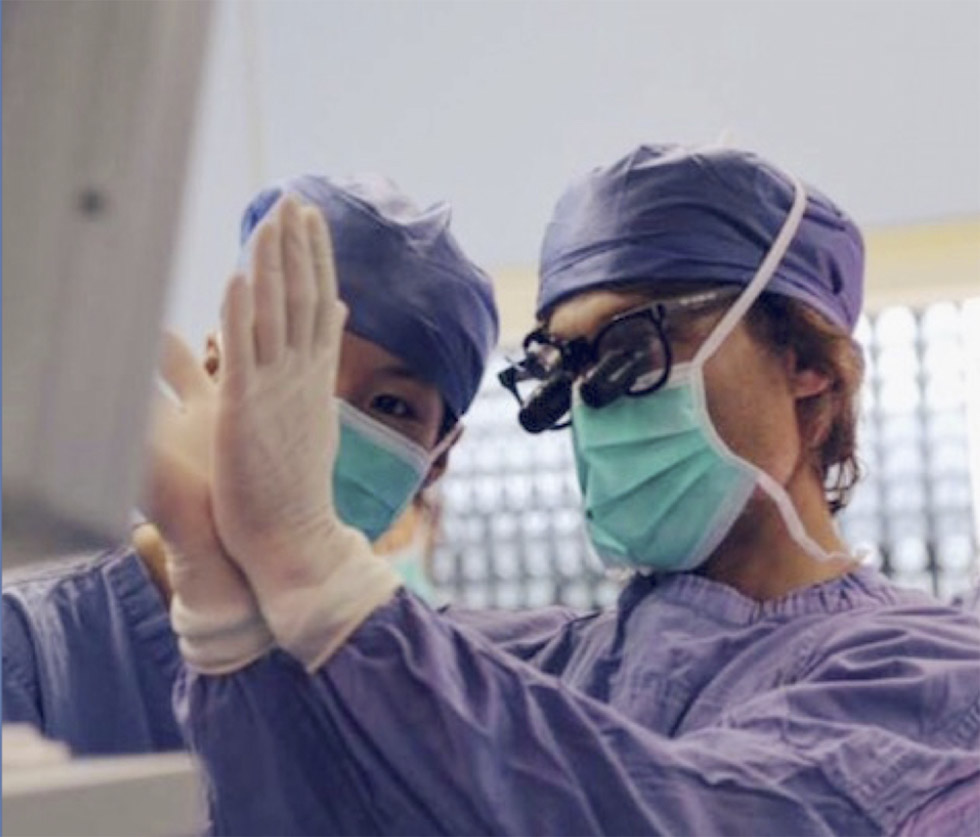Lower blepharoplasty is a time-honored aesthetic procedure aimed at removing lower eyelid bags and addressing lower eyelid hollows and dark circles. These hollows, or depressions, are generally referred to as “periorbital” or “eyelid hollows” and are typically aesthetically displeasing to patients.
Lower blepharoplasty had traditionally been performed with incisions under the eyelid lashes (transcutaneous surgery). This route for surgery has unfortunately led to an unpredictable and unacceptably high rate of lower eyelid retraction (pulled down lower lids). Essentially, lower eyelid retraction leads to a change in the shape of the eye, a drooping of the lower lid, a rounded appearance to the lateral canthus (where the outer upper and lower lids meet), and sometimes a “starry-eyed” or “wide-eyed appearance.” Eyelid retraction occurs in up to 20% of all cases that are performed by the transcutaneous method. Of note, sometimes retraction does not develop until years later. As a result, surgeons may not know that this was a surgical issue.
To avoid this devastating complication, surgery can now be performed from inside the eyelid (transconjunctival surgery). This is my preferred route for surgery. This method of lower blepharoplasty greatly reduces the risk of altering the eye shape as it addresses fat prominence and preserves the integrity of critical eyelid structures which maintain eyelid shape and appearance (the orbital septum and orbicularis muscle).
Additional adjuncts which can improve the outcome of lower blepharoplasty and prevent complications are canthal suspension, canthoplasty or canthopexy (eyelid tightening), and fat re-positioning (preserving eyelid fat to fill under eye hollows). In aesthetic eyelid surgery, the goal is to enhance appearance without disturbing function. Canthal suspension aids preventing retraction by supporting the lower eyelids. A modified canthoplasty, in which the lower lid is formally reinforced, without its disinsertion or shortening, or a canthopexy, where the orbicularis muscle is used to support the lower lid, can be performed to accomplish this goal. These procedures are less tissue disruptive and traumatic, simpler and quicker, and lead to less postoperative complications, than traditional canthoplasty. They are a necessary step in lower eyelid blepharoplasty surgery and can be mastered with experience.
In fat re-positioning, transposing native eyelid fat in underlying hollows (rather than fat excision) reduces elevations (fat prominence) and fills the depressions (eyelid hollows). This technique smooths these contour irregularities and re-creates the natural contours of the youthful lower lid, while preserving volume. This is why preserving the fat in the eyelid is essential during a lower blepharoplasty procedure.
It is essential that lower blepharoplasty surgery only be performed by an experienced eyelid surgeon who can adequately evaluate the lower eyelid deficits present and plan accordingly to create a natural result. Below are a few examples of surgical outcomes of Dr. Massry’s patients:

Before and after lower lid blepharoplasty with Dr Massry
 Lower lid retraction repair
Lower lid retraction repair

Lower eyelid blepharoplasty – Dr Guy Massry
You can read Dr. Massry’s full article on “Comprehensive Lower Eyelid Rejuvenation” at https://drmassry.compdf/comp-ll-rejuv-2010_1.pdf
And watch a short video on lower blepharoplasty here: https://www.youtube.com/watch?v=xY2nVFfIU-A.
As with all procedures, the key to surgical success has more to do with the plan we develop preoperatively than with what we do during surgery. This is especially true with lower lid blepharoplasty. If you have an interest in lower blepharoplasty or have questions about the procedure – please don’t hesitate to Contact Dr. Massry.



